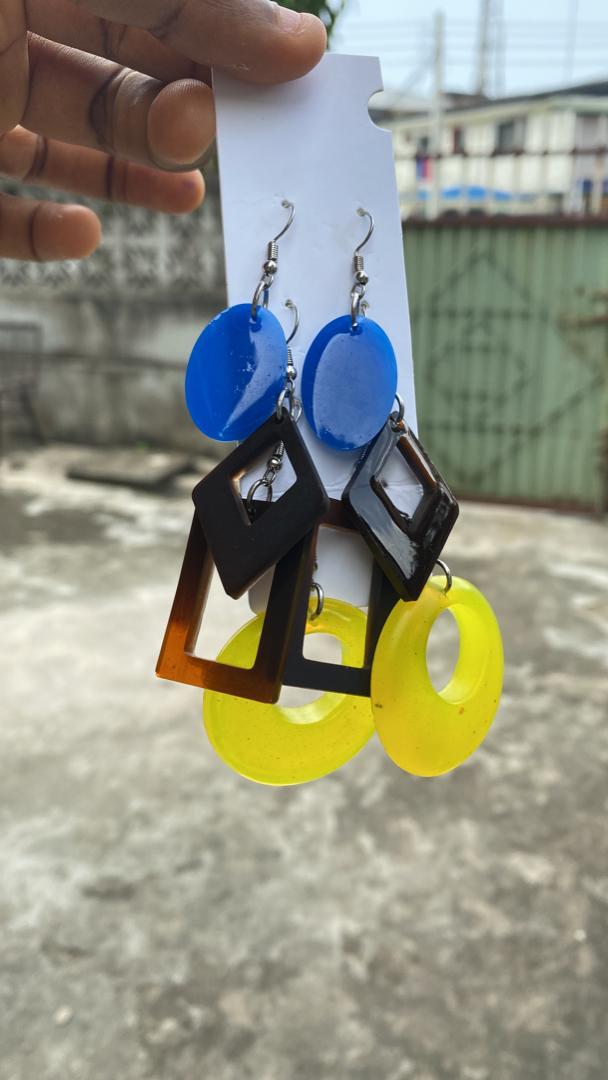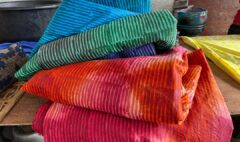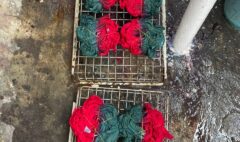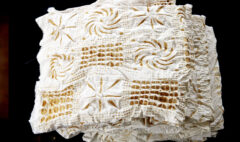How to Make Polymer Clay Earrings: Quick Step-by-Step Guide for Creative Success
How to Make Polymer Clay Earrings: Quick Step-by-Step Guide for Creative Success
How to Make Polymer Clay Earrings: Quick Step-by-Step Guide for Creative Success
Introduction: Quick overview of the craft and its appeal
Polymer clay earrings win hearts because they are light, bold, and endlessly customizable. The material cures in a home oven, not a kiln, which keeps the process accessible. For African-inspired creators, polymer clay becomes a contemporary canvas for motifs that echo Adinkra wisdom, Ndebele geometry, Tuareg line work, and the vibrant storytelling of Maasai color palettes. The result, a fresh fusion of heritage and modern style that plays well on a small earlobe yet carries big narrative power.
Short story for context. In Nairobi’s Ngong Road craft market, Sifa began shaping polymer clay slabs during the pandemic. She pulled inspiration from her grandmother’s bead colors, deep red for bravery, white for peace, blue for the sky and water. Two years later, her mobile-friendly product photos and clean finish turned local sales into global orders, and her shapes still nod to the beadwork that raised her.
Materials and Tools You’ll Need
- Polymer clay, choose reputable brands for consistency.
- Clean work surface, ceramic tile or glass is ideal.
- Acrylic roller or pasta machine for conditioning.
- Sharp craft blade, tissue blade, or clay knife.
- Cutters or paper templates for shapes.
- Needle tool or pin vise for holes.
- Baking surface, ceramic tile or parchment on a tray.
- Oven thermometer for accurate temperature.
- Fine sandpaper, 400 to 2000 grit, plus water for wet sanding.
- Buffing cloth or rotary tool with soft wheel, optional.
- Jump rings, earring posts or hooks, backs, pliers.
- Strong adhesive, two-part epoxy or UV resin for posts.
- Optional finishes, liquid clay, gloss or satin varnish, mica powders, acrylic paint.
- Safety, nitrile gloves if desired, baby wipes, mask for sanding, separate tools from food use.

Step 1: Preparing Materials
- Condition the clay. Knead until supple and warm. A pasta machine on medium setting helps align particles and prevents brittleness.
- Color plan. Sketch a palette inspired by African aesthetics, for instance, black and white contrasts from Ndebele murals, or earthy ochres that recall Sahel mud architecture.
- Surface prep. Wipe your hands and tools. Lint shows up in light clays. Use a smooth tile, it doubles as a baking base to avoid distortion.
Safety note. Polymer clay cures at a specific temperature. Use an oven thermometer. Keep clay tools separate from food tools. Ventilate lightly and never overbake.
Step 2: Core Techniques or Methods
- Slab method. Roll a flat sheet of clay. Add thin inlays, dots, or cane slices. Press lightly so the surface stays even.
- Marbling. Twist two or three colors, then fold and roll for subtle veining that reads beautifully at earring scale.
- Skinner blend. Create a gradient sheet for sunrise-to-dusk effects, perfect behind carved Adinkra-inspired icons.
- Texturing. Press fabric, carved stamps, or leaves for relief. Light cornstarch prevents sticking. Brush off excess before baking.
- Canes and mokume gane. Stack colored layers, compress, then slice to reveal intricate patterns, a contemporary echo of bead mosaic sensibilities.
- Terrazzo chips. Chop baked scrap clay into confetti and sink into a fresh slab. This reduces waste and adds chic speckle.
Tip. Test a small tile before committing to a big batch. Record settings, thickness, and bake time.
Step 3: Applying the Craft or Creating the Product
- Cut shapes. Work with arches, circles, or cowrie shell silhouettes. Keep walls at least 2 to 3 millimeters for durability.
- Make holes. Use a pin vise to create clean holes for jump rings. If you plan to glue posts, skip the hole in the top piece.
- Bake correctly. Typical cure is 110 to 130 degrees Celsius, check your brand. As a guide, many clays bake at 130 degrees Celsius for 15 to 30 minutes per 6 millimeters of thickness. Use the oven thermometer, steady heat preserves color and strength.
- Cool on the tile. Sudden movement can warp thin pieces.
Small cultural touch. Consider a pair titled Fawohodie, meaning independence in Akan symbolism. Cut a simple crescent and dot pattern that references the symbol without copying sacred textiles directly. Credit the source when you sell.
Step 4: Finishing, Drying, or Setting
Polymer clay does not air dry. It cures in the oven. After cooling:
- Sand. Start with 400 grit, move to 800, 1200, then 2000 with water for a glassy edge.
- Buff. Hand buff with a soft cloth. A low-speed rotary tool gives a gentle shine.
- Seal.

Optional. Use a compatible varnish or UV resin for high gloss. Keep coats thin to avoid pooling.
- Hardware. Use two-part epoxy or UV resin to glue stainless steel or titanium posts. For dangles, add jump rings and hooks with flat-nose pliers. Test for swing and balance.
Skin safety. Choose hypoallergenic findings, stainless steel, titanium, or niobium.
Creative Variations and Personalization
- Adinkra-inspired icons. Stylize symbols like Sankofa or Duafe, then pair with gradients. Share the meaning in your product card.
- Ndebele geometry. Clean stripes and triangles in black, white, and primaries. Channel the precision of mural traditions by masking lines with painter’s tape on raw clay.
- Tuareg line geometry. Thin metallic inlays, graphite gray, and matte finishes speak to desert minimalism.
- Maasai color stories. Use color to communicate, red for courage, white for peace, blue for rain and sky. Balance brights with neutral clay backings for modern wearability.
- Mixed media. Embed thin brass shapes, add subtle mica powder to create sun-kissed highlights, or stamp textile textures from kitenge offcuts.
Turning Your Craft Into a Small Business or Gift Project
- Starter inventory. Build focused series, 6 to 10 designs in two colorways. Photograph on diverse skin tones and simple backgrounds.
- Story-first branding. Write short captions that connect motif to meaning. Keep language respectful, specific, and celebratory.
- Packaging. Recyclable cards printed with care tips. Store earrings flat. Include a small origin note about the pattern inspiration.
A living example. In Kumasi, Ama pairs simple semicircles with carved lines that echo calabash etching. Her booth sign is handwritten, her price tags neat. Buyers remember her warmth and the short story behind each pair, and they return.
Tips for Pricing, Marketing, and Sharing Your Work
- Pricing formula. Materials plus time at an hourly rate, plus overhead, multiplied by a fair margin. For example, 3 times materials plus hourly, then test with your market.
- Tiering. Offer studs at an entry price, mid-size dangles, and statement pieces. Add limited editions for collectors.
- Quality control. Standardize thickness, oven temperature, and sanding. Photograph under indirect daylight for true color.
- Market channels. Insta

gram Reels, TikTok process clips, Etsy, and local markets. List on African-owned marketplaces and collaborate with stylists for editorial shoots.
- Ethical storytelling. Name influences clearly. If using community-specific symbols, research meaning and context, and consider partnerships or giveback to artisan groups when appropriate.
- Accessibility. Offer clip-on options. Note metal types and weight in grams. Provide alt text for images.
- Aftercare. Include a card, store flat, avoid perfumes and acetone, wipe gently with a damp cloth.
How this topic compares to previously written ones
If you have explored batik dyeing or kente weaving in earlier guides, this tutorial shifts from textile process to small-scale sculptural design. Unlike calabash carving or soapstone shaping, polymer clay requires no chisels or dust-heavy workshops, only a home oven and patience. Compared to bead loom work, it offers rapid prototyping of forms, yet it can still honor beadwork color logic and symbolic vocabularies. The overlap is conceptual, narrative through pattern and color, while the technique and tooling stay distinct.
Conclusion: Encouragement to Experiment and Enjoy the Creative Process
Polymer clay earrings are a compact stage for heritage, personality, and design discipline. Keep your temperature honest, your edges clean, and your stories true. The rest, playful color, confident shapes, and respectful cultural references, will carry your work far. What motif or color story will you translate into a pair that feels fully yours today?
Sources and Further Reading
- The Metropolitan Museum of Art, Adinkra cloth and Akan symbolism, Heilbrunn Timeline of Art History.
- Smithsonian National Museum of African Art, Ndebele art and the work of Esther Mahlangu.
- British Museum, Tuareg jewelry, forms and motifs.
- African Arts, JSTOR, scholarship on Maasai beadwork and color meaning.
- Sculpey, manufacturer baking and safety guidelines, sculpey.com.
- FIMO, polymer clay temperature and curing recommendations, staedtler.com.
- Design Indaba, features on contemporary African craft and design entrepreneurship.
If you reach an output limit while reading, continue from the next section header without pause.










